Sabaidee! (Hello in Lao) This is Matsubara from the Laos Office.
As the brief winter in Laos comes to an end, temperatures in the capital city of Vientiane have begun to exceed 30°C in March. In contrast, in Oudomxay Province, where Japan Heart is promoting its Thyroid Disease Treatment and Technology Transfer Project (hereafter referred to as the “Thyroid Project”), the mornings and evenings can still feel chilly — a clear reminder of the country’s regional climate differences. This report covers our recent surgical mission carried out in Oudomxay this March.
Once again, we were honored to welcome two specialist surgeons from the Japan Society of Endocrine Surgeons, along with one volunteer observer doctor. Initially, we had planned to perform surgeries on 11 patients. However, due to final pre-operative test results, two patients had to be canceled.
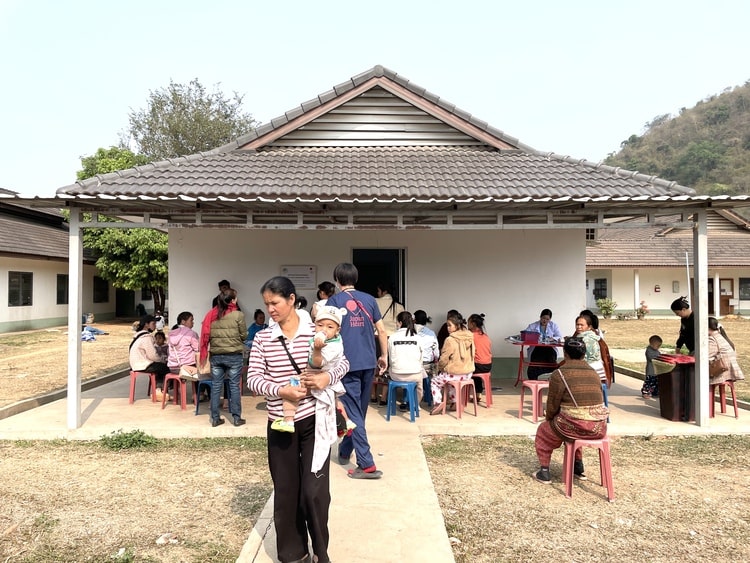
Every time we see the disappointed faces of patients who are told they cannot undergo surgery, we are reminded of how challenging it is to maintain stable health conditions over time in this region. We asked Nurse S. who is in charge of the Thyroid Project, to share some insight.
(Comments from Nurse S.)
The surgeries were canceled due to high blood sugar levels and arrhythmia. In Laos, where regular health check-ups are not yet widespread, lifestyle-related illnesses like these often go undiagnosed. Even when symptoms are recognized, many people leave them untreated due to a lack of awareness or access to care which often results in issues being detected only right before surgery.
Furthermore, in Laos, patients have limited options for managing their conditions. For example, one of the patients canceled due to high blood sugar was aware of their condition and had been making efforts to control it through medication, diet, and exercise. However, their numbers were still not within the operable range.
In Japan, insulin might have been an option. But in Laos, insulin access is unreliable, and many homes lack refrigerators or experience frequent power outages that make storage difficult. On top of that, there are challenges around proper knowledge of needle use and hygiene, as well as the financial burden. For these reasons, using insulin for daily blood sugar control is not common here.
Even when other health indicators are stable, lack of control over a single factor can prevent us from proceeding with surgery. Final decisions on whether a patient is operable are made in consultation with Japanese specialists, as well as physicians in internal medicine and anesthesiology at Oudomxay Provincial Hospital.
Since patients’ lives continue after surgery, we also carefully consider whether the hospital can provide adequate follow-up. We strive to respect the opinions of local doctors who best understand the region’s circumstances.
Still, the disappointment of patients who cannot undergo surgery is very real. That’s why early intervention by healthcare workers is critical. Lifestyle diseases, once developed, are difficult to treat, especially due to economic constraints, so prevention is essential. Patients need to change their lifestyle habits, and rather than having Japanese staff provide all the guidance, we believe it is more effective for local medical personnel to take the lead. We are currently exploring ways to strengthen collaboration with medical staff at Oudomxay Provincial Hospital.
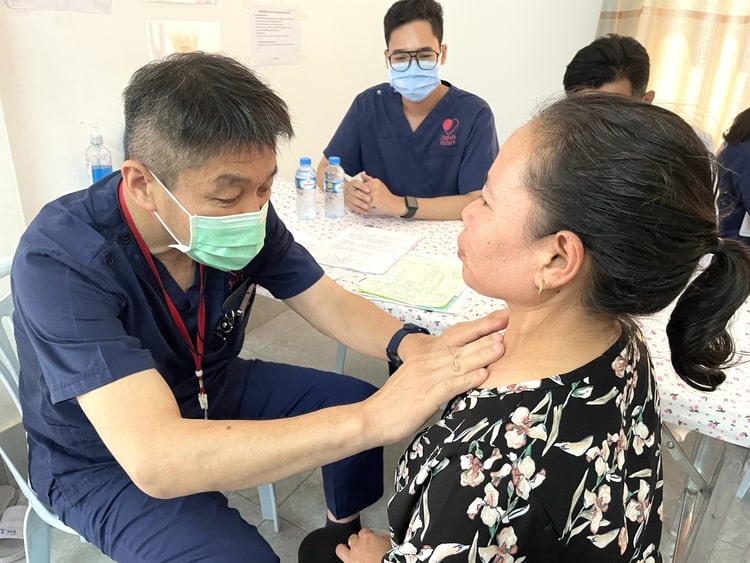
Dr. Kikuchi conducting a preoperative examination
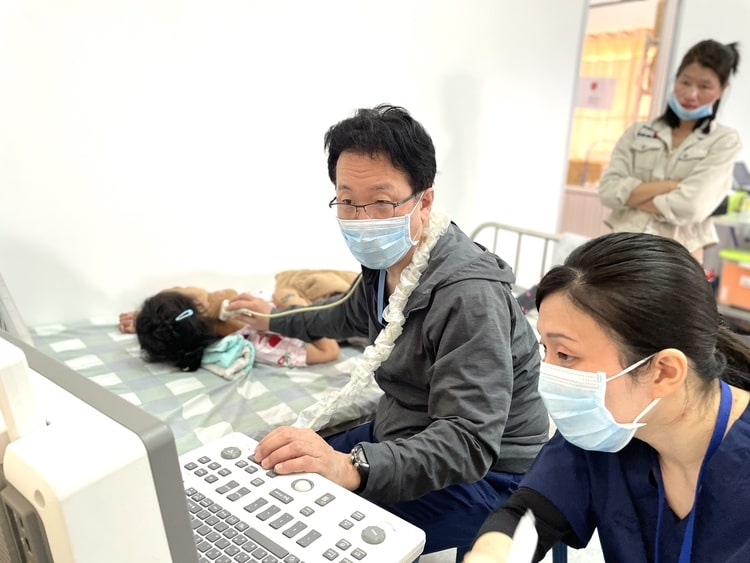
Dr. Kitamura (left) and Dr. Tojo (right) performing an ultrasound examination
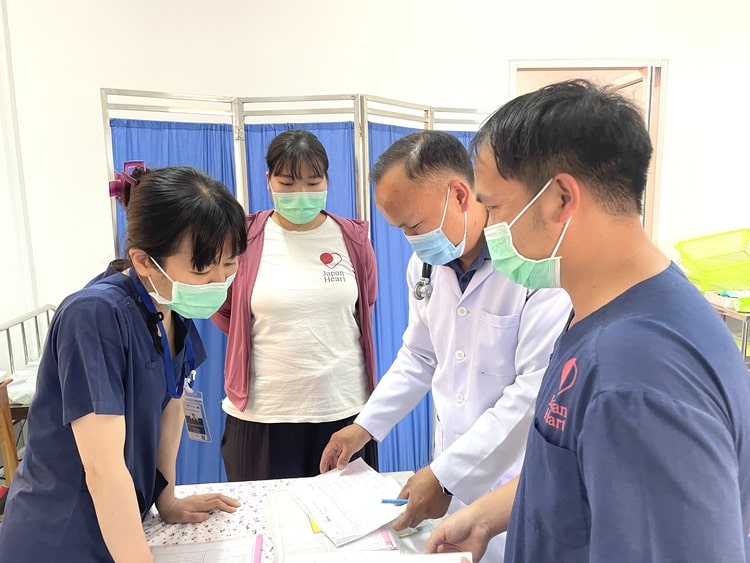
Nurse S. (left) discussing a patient case with an internal medicine doctor at Oudomxay Provincial Hospital
As for the surgeries this time, following the January mission, all procedures were performed by Lao doctors. Their eagerness to gain as much experience as possible while Japanese doctors are present was truly evident.
In most cases, the Lao doctors were able to complete the surgeries independently and approached each procedure with growing confidence. That said, there were moments such as when managing unexpected bleeding where Japanese doctors needed to step in. Ensuring advanced safety management in such situations remains a challenge moving forward.
Later, the Lao surgeon who performed the procedures expressed a strong desire to improve their skills in intraoperative bleeding control.
To ensure the safest possible surgeries for patients, we will continue striving to understand the needs and challenges faced by local medical staff and focus on transferring surgical knowledge and skills throughout the remaining period of the project.
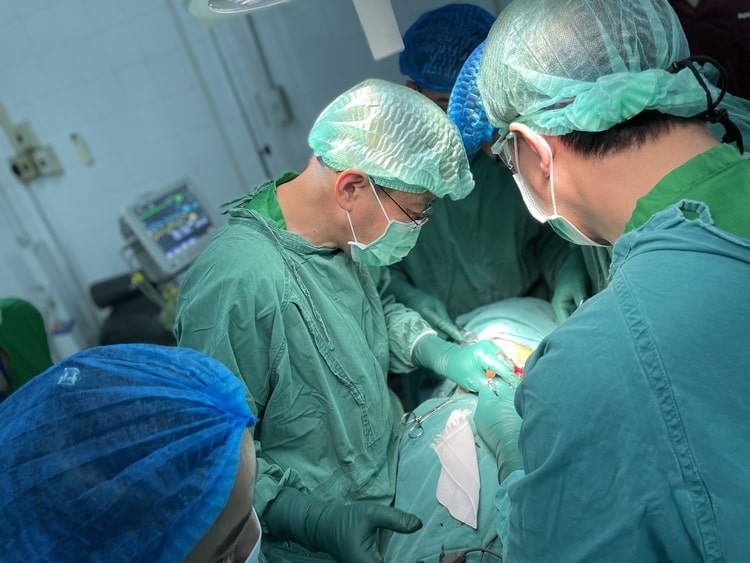
Dr. Kikuchi (top) and Dr. Kitamura (bottom) providing guidance in the operating room
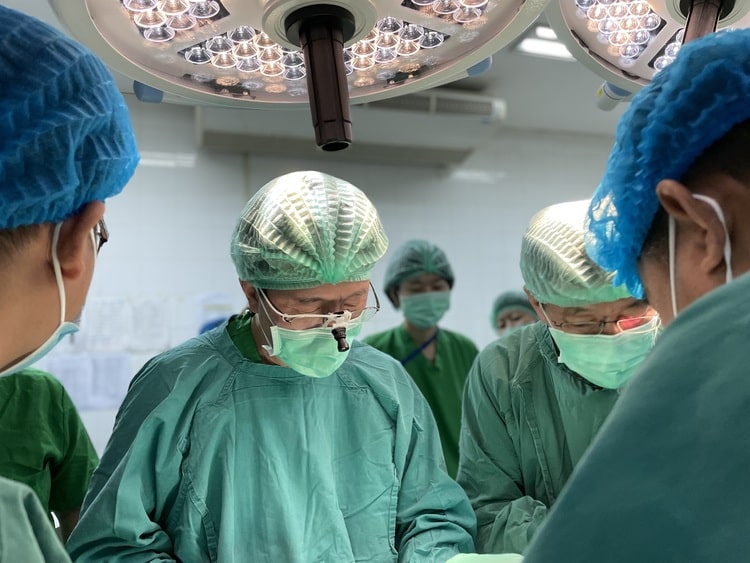
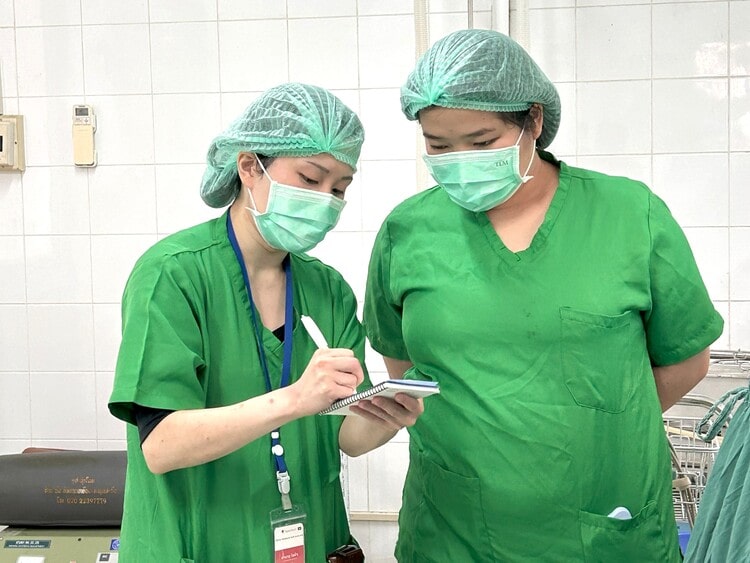
Dr. Tojo (left) responding to a question from Judy, the Japanese interpreter
We also asked Nurse S. to share her thoughts as we prepare for the next surgical mission scheduled for May.
(Comments from Nurse S.)
The upcoming surgical mission in May marks the final operation of the project’s second year. Looking ahead to the final project year beginning this November, which includes four more surgical missions, we see May as a critical opportunity just before the rainy season to assess what challenges the staff at Oudomxay Provincial Hospital recognize for themselves, and to clarify the areas needing improvement so they can gradually take the lead.
Right now, many of the local medical staff still see themselves as being in the position of learners. But ultimately, we hope they will begin to view themselves as hosts inviting Japanese doctors into their surgical field for collaborative procedures.
For example, we hope they will take the initiative in tasks like introducing themselves and aligning patient information before and after surgeries – especially because these are done together with Japanese doctors.
We want internal medicine doctors to take part in deciding which patients are suitable for surgery alongside the Japanese physicians. Likewise, we want surgeons to be more involved in pre-operative patient explanations and decisions on surgical methods, rather than leaving it entirely to the Japanese team. These are the types of working relationships we aim to build.
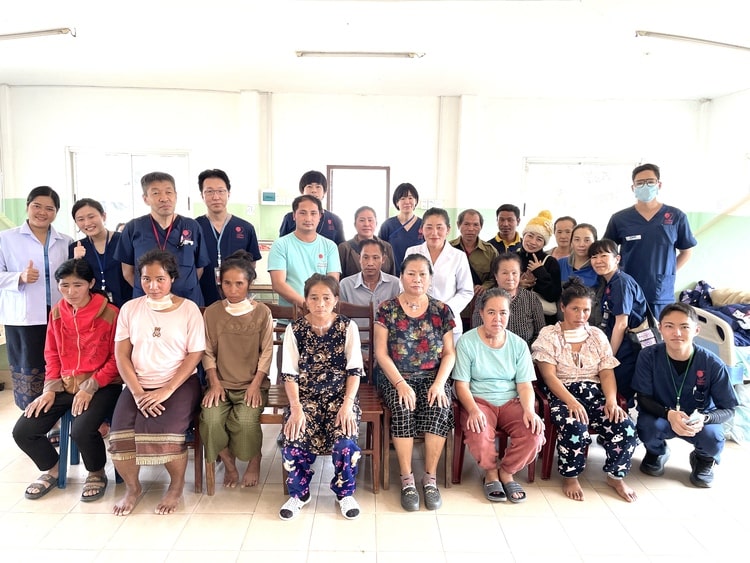
With all the patients before their discharge
Lastly, we would like to express our sincere gratitude to all the doctors who participated in this mission, and to everyone who has supported our work in Laos.
Your continued support for the Laos project is deeply appreciated.
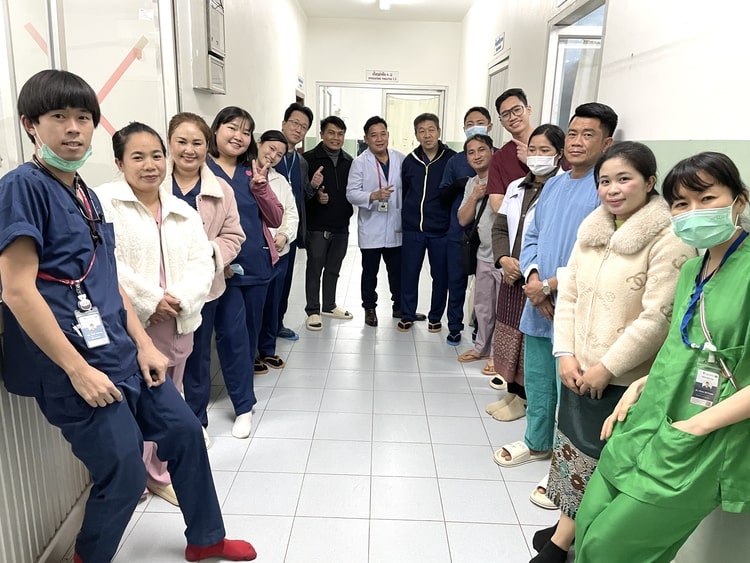
R. Matsubara
Japan Heart Laos Office
Office Manager

